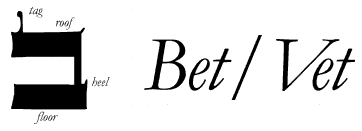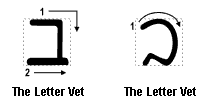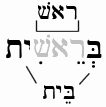|
The first letter of the Hebrew Bible is a Bet rather than an Aleph, and certain Jewish sages have puzzled over why this is the case. One sage thought that this is because the letter Bet connotes power because of the force of air (ruach) being spoken forth; another thought that by starting with a Bet rather than an Aleph, the Almighty was in effect revealing that man did not know the first principles about the creation; yet another thought that since Aleph is a silent letter, it represents God in His unspeakable glory and life, which forever precedes all things (see Isa. 44:6, cp. Rev. 22:13). Jesus described Himself as the "Aleph and the Tav," and the Aleph, humble and lowly, gives out its strength (Aleph) before the house (Bet) of creation in sacrificial love. | 









